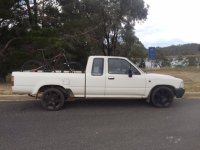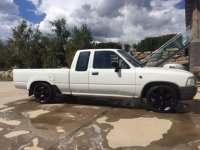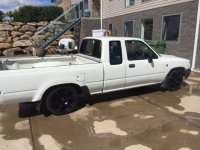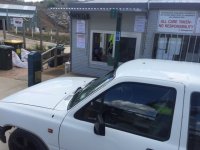The Toecutter
100 kW
- Joined
- Feb 8, 2015
- Messages
- 1,317
kiwiev said:Im hope for 200 km combined highway city drive which I dont think is unrealistic
If you know how to keep the accelerator in check and do 80% of the trip under 90 kmh, and use various hypermiling techniques, its very possible. It's not what someone unacquainted with how to efficiently drive an EV is going to get their first time driving it, in the event that someone else drives it.
To aid you, you may want to check out Phil Knox's Toyota pickup and note its aerodynamic upgrades:
http://evworld.com/article.cfm?storyid=870
Why stop at 200 km range, when you could have 250, or even 300, on the same size battery pack... After all, Otto cycle engines tend to lose thermal efficiency as load decreases, decreasing the returns gained from reductions in drag coefficient/frontal area. The impact of aerodynamics is much more noticeable on the energy consumption of an EV due to an electric motor being efficient across the vast majority of its operating parameters, plus you don't have a lossy internal-combustion furnace to keep cooled and thus do not have to deal with the aerodynamic penalties associated with that if you choose not to by addressing it.
Ecomodder.com could show you a lot of info on this subject, as scores of vehicles there have modifications on them and there are even guides on how they were made.
The AC 51s are 144 volt
The AC 50s are 96 volt which Michael from EV west are running at 120 volt and giving just under 250 ft lb with 2 motors.
With 96V, you can go up to 650A, and get 120 lb-ft or so, so 250 lb-ft sounds about right. You'll lose high-rpm power, continuous power, and a little peak power though versus going with 144V/500A, but you're probably not concerned about that, as whether you use 144V/500A or 96V/650A, you're still going to be capable of 160+ kmh, and given that you would rather get the low end grunt, a logical choice.
I wish I could afford a set of twin AC50s for the GT6. Direct drive geared for ~170 mph top end with the 96V/650A setup for each would yield ~155 hp/245 lb-ft. In a sub 2,000 lb conversion, 0-60 mph would be in the mid-upper 4 second range... *drool* Better yet, a Tesla P85D drivetrain and a LoneStar pack would be lunacy.
As far as performance goes more focused on 0 to 60 times. I have a mate down hear who has the duel cab version with a warp 9 at 144 volts and 380 Amp limit on his controller and I have been with him and it does 0 to 60 in 9.2 seconds.
Btw his car weighs 1350 kg all up.
Is the 380A limit on the battery for that duel cab? I'd imagine the motor would require a bit more current in order to get the torque for that sort of 0-60 given that 144V*380A is 53720W, and 380A to the motor would only give a WarP 9 perhaps 100 lb-ft of torque. I could easily see 1,000A at the motor allowing that with its 250+ lb-ft, even if the power applied from the batteries is a meagre amount of around 55 kW.
http://evtv.me/2011/04/the-graphs-is-always-greener/
So the space cable is lighter not sure by what thou?
So I think 0 to 60 under 7 seconds is do able
But in the end it is just truck,
Cheers Kiwi
If you go with each AC50 getting 650A instead of 500A, it can be done, provided you get the traction needed.
Maybe you could do like a yankee redneck and paint it camoflauge and put a pair of truck nuts on it. :lol:





